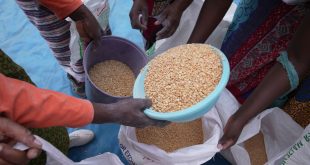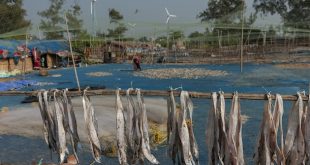As normality filters back into American lives after a year of lockdowns, United States hospitals and other institutions are busy making provisions for one aspect of that old normal they would rather consign to the past: mass shootings.
Last year was the least deadly for US mass shootings in a decade, a Reuters news agency tally shows.
But spring has brought a resurgence in gun violence and insurers are reporting a jump in demand for protection against such events at a time when the pent-up traumas and frustrations of living through a pandemic are also re-entering the public domain.
Client inquiries for what the industry calls active shooter policies have risen 50 percent year on year in the past six weeks, said Tarique Nageer, terrorism placement advisory leader at Marsh, the world’s biggest insurance broker.
Such policies have gained popularity in recent years following a spate of school shootings. They typically cover victim lawsuits, building repairs, legal fees, medical expenses and trauma counselling.
This year, however, demand has been particularly strong from the healthcare sector, even though fatal shootings in US hospitals are comparatively rare and mass shootings in hospitals are once-in-a-decade events, according to Nageer.
That finding is supported by Tim Davies, head of crisis management at Canopius, a Lloyd’s of London global speciality insurer.
Most hospitals are open to the public and their emergency wards, where patients with COVID-19 and other severe illnesses and injuries get treatment, can become triggers for potentially volatile behaviour.
“Those are places where you could see people who are disgruntled that members of their family might have died and didn’t get a vaccine or weren’t treated properly,” Davies said.
Such concerns have led to a hike in active shooter insurance prices of about 25 percent to 50 percent compared to last year for healthcare firms, while overall rates have remained steady, he said.
Chris Kirby, head of political violence cover at insurer Optio, said active shooter policy rates had risen by as much as 50 percent for some clients, without specifying any industry sector.
Schools and churches brace themselves
Brokers say that besides hospitals, retail establishments, schools, universities, restaurants and places of worship are other prominent clients, buying cover ranging from $1m to as high as $75m.
The US witnessed 200 mass shootings in the first 132 days of this year, according to a report by the Gun Violence Archive, a non-profit research group that defines these acts of violence as any event involving the shooting of four or more people other than the assailant.
Hart Brown, senior vice president of R3 Continuum, a crisis management consultancy that helps clients deal with the aftermaths of about 800 shootings a year, said violence had migrated from public spaces into homes in 2020.
But this year, demand for R3 Continuum’s services is up 15 percent to 20 percent, he says, with the gradual reopening of offices having brought violence back to the workplace — compounded by pandemic-induced stresses and economic insecurities that are often endured in isolation.
“The environment that was created by the pandemic, with the social distancing, the lockdown, and so forth, and the compounding stressors, is really what’s driving much of the violence that we’re seeing right now,” he said.
A survey by the Kaiser Family Foundation backs up that assessment, showing 41 percent of US adults reporting symptoms of anxiety or depressive disorders in January, compared with 11 percent in the first half of 2019.
 Top Naija News: Nigerian News, Breaking News Nigeria and World News Top Naija News is a daily news publication in Nigeria, delivering the latest breaking news in Nigeria and around the world.
Top Naija News: Nigerian News, Breaking News Nigeria and World News Top Naija News is a daily news publication in Nigeria, delivering the latest breaking news in Nigeria and around the world.



